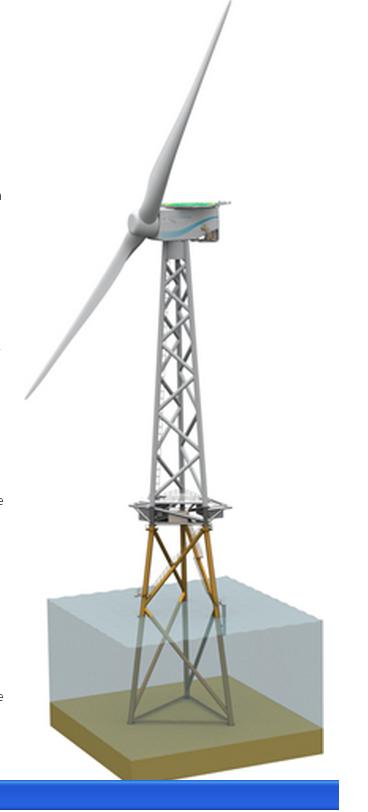
The company says its operation strategy for the 2B6 has been sculpted to mitigate known risks and lower costs.
2-B Energy believes the basis for its design has shifted, with new drivers for offshore technology challenging the existing design path, possibly closer to its limit for reducing costs further.
The new market (offshore) in combination with new turbine size class, opens a new chapter in wind technology and path, says the company, for the two-bladed rotor design. With this new environment, there is a renewed foundation for the 2-bladed rotor design as many of the early conditions against the two-bladed concept are now more aligned, and can instead mitigate risk, as well as reduce cost.
The various new design choices in 2-B Energy’s 2B6 bring opportunity and greater optimization potential, compared to the well-optimized three-bladed wind turbine currently used in the market place. The introduction of the 2B6 will be a design to re-introduce some of these technologies and opportunities. With an overall project perspective and power plant view, the 2B6 offers potential, yet to be discovered for offshore wind, where cost of energy is likely to reach well beyond normal cost reduction boundaries by conventional technology.
The 2B6 offshore wind turbine
The two-bladed rotor application for the 2B6 has been integrated in the design for its inherent rotor-load characteristics in which nacelle and rotor geometry are tailored to provide a stable nacelle behavior. The integration between a full jacket structure and nacelle behavior is mated through a fully-active yaw system with soft damped features.
In combination with individual pitch control, load characteristics are well managed and design features from the past, such as a teeter hinge, have been eliminated because a slower rotation allows for higher aerodynamic responses during each revolution. The two-bladed design crossing the hub on a center line that allows control by measure and counter measure in various combinations for broad results between the two blades. This leaves a simple hub and conventional pitch design so that third party pitch systems are easily accessible for replacement. The two-bladed rotor is also safely accessible in vertical position where full access, even with HSE equipment all around the hub, is enabled through inside walkways.
Development principles
Using proven technologies as a base, and through high-level principles of simplicity, material savings, and extended life, 2-B Energy aims to build products that reduce Cost of Energy (CoE) and control and minimize the risks for the product, as well as for personnel.
Reduce known offshore risks and COE by means of:
- Proven components (technology) – confirmed or applied by industry
- Component eliminations by conceptual design choices – simplification reached by integrated designs
- Lowering material consumption – achieved through integrated design and as result of eliminations
- Life-time extension with new operational strategy
- The power plant approach, which entails an holistic view on the turbine as the integration of components in the full lifetime and transportation, installation, operation and maintenance.
The outcome – the 2B6 wind turbine
The 2B6 combines designs that are known and proven from the past. By challenging the design choices through the design principles, the configuration demonstrates a combination of tailored offshore applications and technologies that lead to distinctive advantages compared to today’s “state-of-the-art” technology.
The integrated power plant design by 2-B
The 2B6 is a 6 MW offshore wind power plan. The nacelle and rotor have been tailored to its behavior with related components. The nacelle with its damped yaw system matches well with the full jacket structure. Nacelle loads are well managed with good damping and individual pitch control.
The generation configuration has also been tailored to work in harmony with an adapted electrical system designed with the 2B6. This provides for simplification, redundancy, and lower cost. The machine head and the full jacket structure have also been optimized for simple transport and installation.
Due to the unobstructed nacelle configuration with the two-bladed rotor, a helicopter landing is possible at most times. Even 24/7 operation will be possible in the 2-B wind farm. Forty-year plant life is matched with pre-planned periodic nacelle overhauls. Every 10 years, the nacelle (with rotor) is “swapped,” refurbished, and cycled back into the project. As the systems and strategies have been adapted to helicopter operation, the plant can realize greater efficiency and lower CoE levels.
2-B Energy
2benergy.com
Filed Under: Blades, News, Offshore wind




